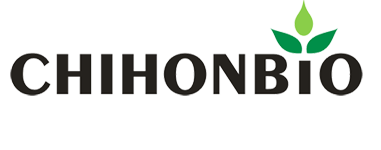


PRODUCTS:ε-Polylysine
CAS:28211-04-03
Molecular weight:4130~5776
Molecular formula :[C6H12N2O?HCl]n?H2O
Molecular structural:

ε-Polylysine is a food preservative manufactured from a fermentation process using Streptomyces albulus under aerobic conditions. It can inhibit the growth of Gram-positive and Gram-negative bacteria, yeasts, moulds, bacteria and ect.
ε-Polylysine is a homopolymer of L-lysine, one of the essential amino acids. It is linked by peptide bond formed with α-carboxyl of L-lysine and ε-azyl from other L-lysine.
ε-Polylysine ?molecular weight is between 3200~4500 g/mol (degree of polymerization = 25~35).ε-Polylysine is hygroscopic, light yellow power. It is soluble in water, slightly soluble in ethanol, insoluble in organic solvent such as ethyl acetate, ether, ect.. The molecular of ε-Polylysine is a straight chain polymer of lysine. It can decompose to lysine in human body, and can be completely digested to absorption by the human body. ε-Polylysine can inhibit the growth of G+ and G- bacteria , yeast, mould, virus and ect, especially inhibit the G- bacteria which can’t be easily inhibited by other preservatives, such as E.coli, Salmonella, and also can inhibit the thermophilics, such as B,stearothermophilus. Its activity is not affected by PH, and stable when heated (120℃ for 20min). Therefore, it can be sterilized along with the raw material.
However, ε-Polylysine antibacterial activity may be reduced due to the binding with acidic polysaccharides, hydrochlorides, phosphates, copper ions or others. ε-Polylysine antibacterial activity can be enhanced with hydrochloric acid, citric acid ,malic acid , glycine and higher fatty glycerides.
ε-Polylysine is food grade and meets FAO/WHO specifications. It is certified as GRAS (Generally Recognized As Safe) by the US FDA with US GRAS No.: GRN000135. Currently ,ε-Polylysine has approval as a food additive in China, Korea, Japan USA and some more countries.
ε-Polylysine is consider as safe preservative commercially used as a natural food preservative in Japan, Korea an USA. ε-Polylysine is common in food applications like: boiled rice, cooked vegetables, soups, noodles and sliced fish (sushi).
Items |
Standard |
Appearance |
Cream to yellow light powder |
Content |
≥95.0% |
Loss on drying |
≤8.0% |
Ash. |
≤2% |
pH (1% Titrimetric? solution) |
3.0~5.0 |
Pb. |
≤2.0mg/Kg ? |
Total As.(as As2O3) |
≤3.0mg/kg |
E. coli |
<3.0MPN/g |
Coliforms |
≤3.0MPN/g |
Salmonella |
25g Negative |
Listeria monocytogenes |
25g Negative |
Food Cat No |
Food Category |
Maximum Dosage(g/kg) |
07.0 |
Bakery |
0.15 g/kg |
08.03 |
Cooked meat |
0.25 |
14.02 |
Fruit and vegetable juice |
0.2 g/L |
04.0 |
Fruits, vegetables, beans, edible fungi and algae |
0.30 |
06.02 |
Rice products |
0.25 |
06.03 |
Wheat flour and products |
0.30 |
06.03.02.01 |
Fresh wheat products(such as : fresh noodl, Wonton skin, Dumpling skin) |
0.5 |
06.05 |
Starch products |
0.5 |
06.07 |
Instant Rice, Flour products |
0.5 |
07.04.02 |
Coarse grain products |
0.40 |
10.02.01 |
Marinated egg |
0.5 |
08.0 |
Meat and Cooked meat products |
0.30 |
12.0 |
Condiment |
0.50 |
14.0 |
Beverages |
0.20 |
■ 500g/bottle ,20 bottles/carton
■ 1.0kg/bag ,10kg/carton



